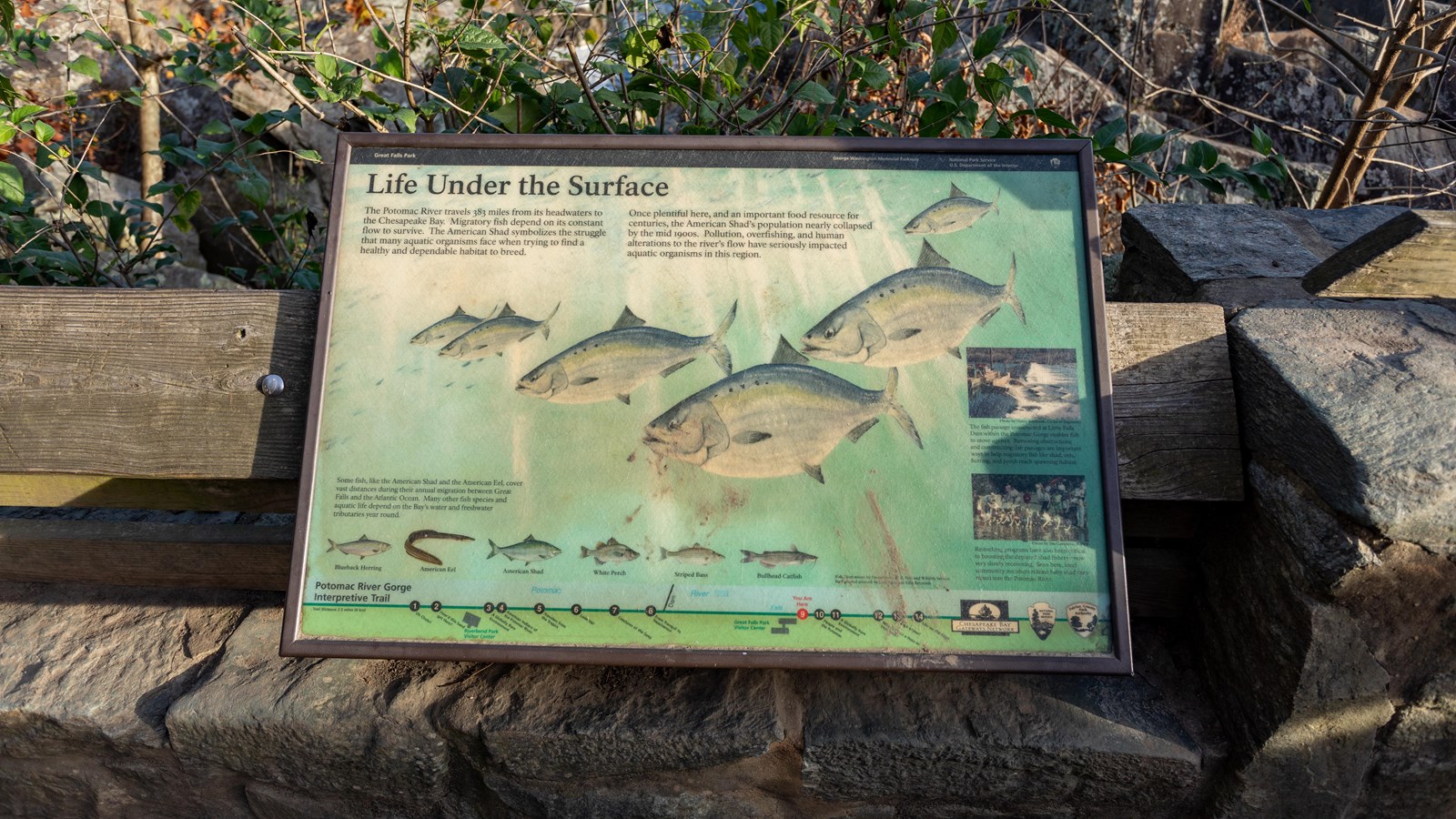Last updated: March 13, 2024
Place
Information Panel: Life Under the Surface

Photo: NPS / Claire Hassler
Quick Facts
Amenities
1 listed
Historical/Interpretive Information/Exhibits
The Potomac River travels 383 miles from its headwaters to the Chesapeake Bay. Migratory fish depend on its constant flow to survive. The American Shad symbolizes the struggle that many aquatic organisms face when trying to find a healthy and dependable habitat to breed.
Once plentiful here, and an important food resource for centuries, the American Shad's population nearly collapsed by the mid 1900s. Pollution, overdosing, and human alterations to the river's flow have seriously impacted aquatic organisms in this region.
Some fish, like the American Shad and the American Eel, cover vast distances during their annual migration between Great Falls and the Atlantic Ocean. Many other fish species and aquatic life depend on the Bay's water and freshwater tributaries year round.
The fish passage constructed at Little Falls Dam within the Potomac Gorge enables fish to move upriver. Removing obstructions and constructing fish passages are important ways to help migratory fish like shad, eels, herring, and perch reach spawning habitat.
Restocking programs have also been critical to boosting the depleted shad fishery- now very slowly recovering. Seen here, local community members release baby shad they raised into the Potomac River.
Once plentiful here, and an important food resource for centuries, the American Shad's population nearly collapsed by the mid 1900s. Pollution, overdosing, and human alterations to the river's flow have seriously impacted aquatic organisms in this region.
Some fish, like the American Shad and the American Eel, cover vast distances during their annual migration between Great Falls and the Atlantic Ocean. Many other fish species and aquatic life depend on the Bay's water and freshwater tributaries year round.
The fish passage constructed at Little Falls Dam within the Potomac Gorge enables fish to move upriver. Removing obstructions and constructing fish passages are important ways to help migratory fish like shad, eels, herring, and perch reach spawning habitat.
Restocking programs have also been critical to boosting the depleted shad fishery- now very slowly recovering. Seen here, local community members release baby shad they raised into the Potomac River.
